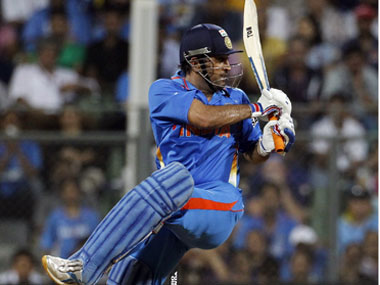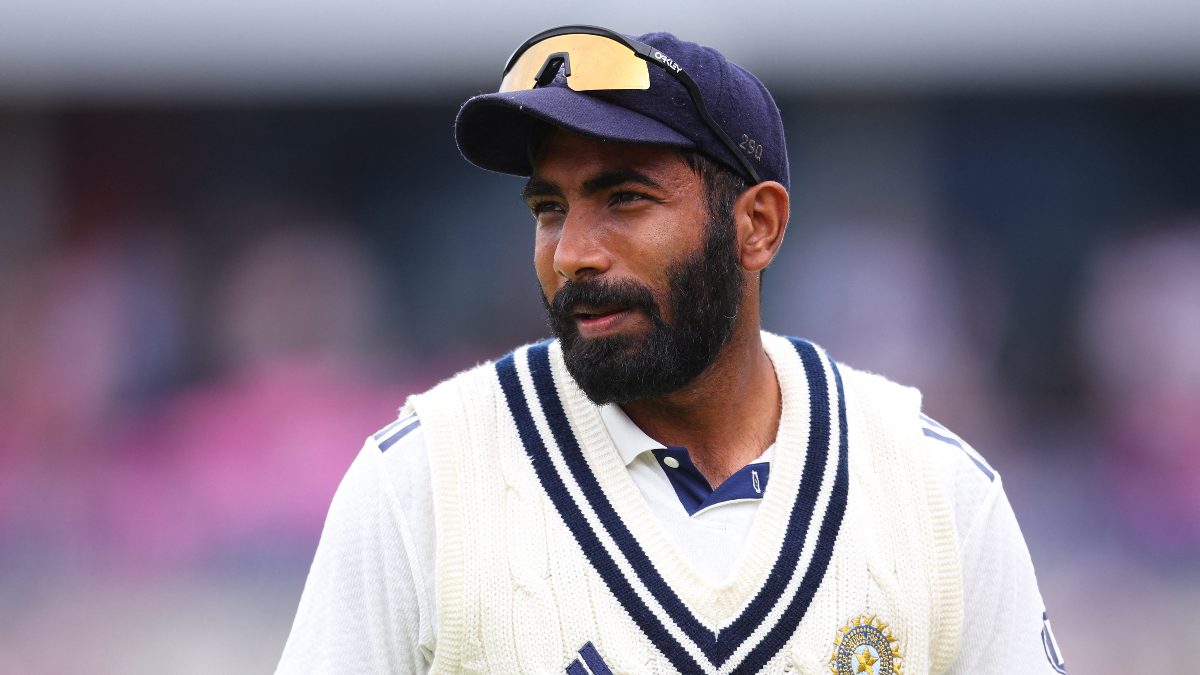It’s the evening of the World Cup final. M S Dhoni smacks the ball into the stands to take his side to a win. My immediate reaction is to exult. My next reaction is to cringe; I can already see the New India clichés dance before my eyes. [caption id=“attachment_7948” align=“alignleft” width=“380” caption=“Dhoni smacks the shot into the stands during the Cricket World Cup 2011. Reuters”]  [/caption] Sure enough, over the next two days, pundits reliably allude to the global aspirations of the Indian youth, the achievements of small-town India, and the zeitgeist of modern India. A few weeks later, when Dhoni makes Time’s list of the 100 most influential people in the world, Chetan Bhagat writes lavishly of him: “Dhoni doesn’t just lead a cricket team; he’s also India’s captain of hope. And he didn’t just win India the World Cup; he also taught India how to win.” Cricket has long been held hostage to its status as a metaphor for India, perhpas more so in recent years. Be it the World Cup triumph, eye-popping success of the IPL, or Lalit Modi’s fall from grace, each became symbolic of a vast billion-strong nation. In 2010, the New York Times noted:
For many Indians, the league, known as the I.P.L., became a symbol of a newly dynamic and confident India that was expanding its influence in the world. Yet after weeks of allegations of graft and financial malfeasance, the resignation of a government minister and the suspension of the league’s charismatic commissioner, the league has become emblematic of something else: how much the old and often corrupt political and business elite still dominates the country.
The editor of the Financial Express, Dhiraj Nayyar, stuck his analogy where it hurt the most: “In many ways the IPL is a confirmation of what India really is: an emerging economy.” Cricket as history The most famous quotation from the most famous book about cricket – C. L. R. James’ Beyond a Boundary – is a rhetorical question from its preface: “What do they know of cricket who only cricket know?” When it was written in 1963, this was the first significant invitation to look upon cricket as a metaphor, to squint into its constantly eddying waters and discern the currents of politics and history. Through his book, James, a Marxist historian from Trinidad, readily took up the gauntlet that he had thrown down himself. Beyond a Boundary examines race and class in the West Indies and in England, but its keenest insights fix upon cricket’s role in the history of British colonialism. (That famous quotation, in fact, is a sly inversion of a witticism coined by that arch-imperialist Rudyard Kipling: “What do they know of England who only England know?”) In the West Indian dominance of the quintessential English game by the former colonies, James saw the decline of the British Empire. Worrell was, to James, “an authentic national hero,” partly because he had “shown…mastery of what Western civilization had to teach.” Cricket as India The rise of the West Indies was one of the earliest opportunities for the cricket-as-metaphor narrative, which countless other cricket analysts and commentators have since mined – particularly so in India, where the invitation has been far too enticing to turn down. The metaphor of cricket-as-India has sometimes been edifying, but has often been flawed or tedious – and never more so now that India has won the World Cup and can claim to be the best cricket team on the planet. India won its first World Cup in 1983, but only over the last decade has its national team grown to be a consistent world-beater. During the same time, the Board of Control for Cricket in India became the wealthiest of the sport’s governing bodies, even as the larger Indian economy expanded rapidly. The IPL, begun in 2008, is so lucrative and heavily sponsored that it draws star cricketers from across the world. The tournament is now able to twist the cricket schedules of other countries to suit its own needs. So magnetic is its attraction that a spirited bowler like Lasith Malinga claims that his knees are too weary for a Test tour of England, even as he pounds out his overs for the Mumbai Indians. These various coincidences in timing have not eluded those observers who, pace James, like a splash of metaphor on the side of their cricket. The Indian team has been hailed, tirelessly and tiresomely, as emblematic of a confident nation, and the IPL as a symbol of an influential economic giant – or conversely, as a sign of cultural malaise. Beating that good horse Cricket-as-India has become the worst kind of metaphor. It is continuously interpreted to arrive at the same glib conclusions about a country that appears fated to be explained only in such shorthand. This endless metaphorizing is a part of what Amit Chaudhuri, writing in Outlook, called a new norm: “to see India not as a place, but as a concept you could experience, an idea making its way in the world.” In being invoked at merry convenience, the metaphor has even lost its spark of truth; what, after all, did it say of the economic supergiant’s youthful aspirations that India couldn’t make it past the league stages of the World Cup in 2007, not so very long ago? The metaphor diminishes India, because it equates the lives of a billion people with the deeds of 11 men in a stadium, eliding over far too many complexities in favour of this one-tone narrative. Just as regrettably, it also diminishes cricket, this sublime sport of grace and nuance. A sport in which – even in the Twenty20 era – the understated is valued as much as the emphatic. Only by becoming a symbol of something far bigger – the metaphor’s constant overuse suggests – can cricket command the weight of significance for itself. Cricket as cricket Perhaps it is true that sport moves us only because we invest it with so much symbolic value. The 1980 ice-hockey game, later dubbed the Miracle on Ice, or the Bobby Fischer-Boris Spassky chess battle in Reykjavik in 1972, attained greater glory when framed in the politics of the Cold War. Here was the United States very literally beating the Soviet Union at its own game. Jesse Owens’ triumphant sprinting in the 1936 Olympics in Berlin was one kind of repudiation of racial prejudice; Francois Pienaar’s post-Apartheid rugby World Cup team was another. But the truth is, of course, sport doesn’t always need such artificial props to be stirring or important. Squeezing reasons for national angst or celebrations of identity out of every development in Indian cricket deprives us of the chance to be really moved by the game. In this metaphor for the sake of metaphor, there is little meaning or wisdom – or cricket – to be found any more. Sometimes cricket should just be cricket, no less and no more. Samanth Subramanian is a contributing writer and the host of First Post’s literary salon. He is the Indian correspondent for The National and the author of Following Fish: Travels around the Indian Coast (Penguin, 2010).


)

)
)
)
)
)
)
)
)



